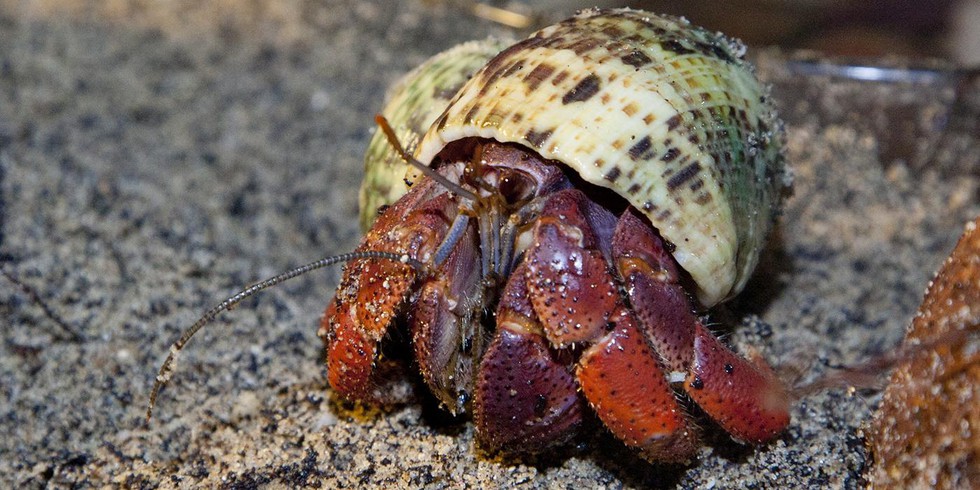The majority of terrestrial hermit crab species worldwide are found using trash as shells, according to a study conducted by experts from two Polish universities. The study utilized publicly available images of hermit crabs online and past scientific literature.
Findings:
- The study identified 386 instances of hermit crabs using garbage as shells, with approximately 85% utilizing plastic caps and the remaining using metal and glass.
- The observed behavior was present in 10 out of the 16 species of land-dwelling hermit crabs, spanning tropical regions from Africa to Central America.
- The research confirms the global scale of hermit crabs using artificial materials, emphasizing the prevalence of plastic waste and its impact on wildlife.
Published Paper:
The findings will be published in the Science of the Total Environment journal, highlighting the global occurrence of the behavior and its potential consequences.
Reasons Behind the Behavior:
- The authors suggest that the choice of plastic homes may be influenced by better camouflage in polluted environments.
- Limited availability of suitable seashells on some coasts could lead hermit crabs to opt for artificial materials.
- Other factors include unique shells for sexual signaling, reduced weight of artificial shells, and potential reliance on odor cues.
Chemical Attraction to Plastic:
- A 2021 study found that hermit crabs are attracted to a chemical emitted by plastic, providing a possible explanation for their preference.
Dangers of Plastic:
- Plastic poses dangers to hermit crabs, as evidenced by a 2019 study in the Cocos (Keeling) Islands, where over half a million hermit crabs had crawled into items like bottles, leading to fatalities.
- The study revealed the significant impact of human-generated trash on the islands’ hermit crab population.
Hermit Crab Anatomy and Evolution:
- Unlike most crabs with naturally calcified abdomens, hermit crabs have soft bodies at birth.
- They evolved to find seashells for protection, retracting into them or extending their legs to scuttle around.
Human Impact on Evolution:
- The study’s authors raise the question of whether human-generated trash is steering hermit crabs towards a novel evolutionary trajectory or trapping them in an ecological and evolutionary dilemma.
Multiple Choice Questions (MCQs) with Answers:
1. What did the study by Polish universities analyze?
a) Bird migration patterns
b) Online shopping trends
c) Images of hermit crabs and scientific literature
Answer: c) Images of hermit crabs and scientific literature
2. What is the primary material used by hermit crabs as artificial shells, according to the study?
a) Glass
b) Metal
c) Plastic caps
Answer: c) Plastic caps
3. In how many of the land-dwelling hermit crab species was the observed behavior present?
a) 5 out of 10
b) 16 out of 16
c) 10 out of 16
Answer: c) 10 out of 16
4. Which journal will publish the findings of the study?
a) National Geographic
b) Science of the Total Environment
c) Nature
Answer: b) Science of the Total Environment
5. Why might hermit crabs be choosing plastic homes, according to the authors?
a) Better camouflage
b) Limited availability of seashells
c) Both a and b
Answer: c) Both a and b
6. What chemical were hermit crabs found to be attracted to in a 2021 study?
a) Calcium
b) Plastic-emitted chemical
c) Oxygen
Answer: b) Plastic-emitted chemical
7. How do hermit crabs differ from most crabs in terms of their abdomens?
a) They have calcified abdomens
b) They have soft bodies at birth
c) They have retractable abdomens
Answer: b) They have soft bodies at birth
8. What term is proposed for the present geological epoch defined by human activity?
a) Anthropology
b) Anthropocene
c) Anthropomorphic
Answer: b) Anthropocene
